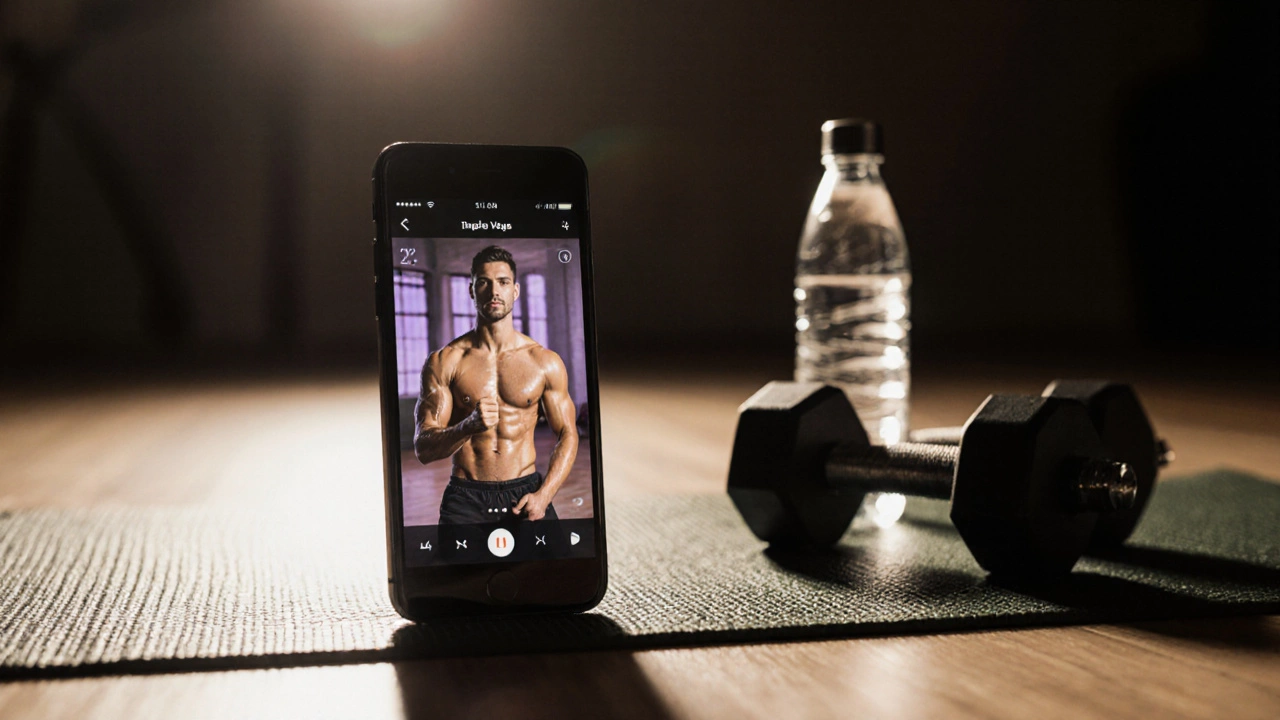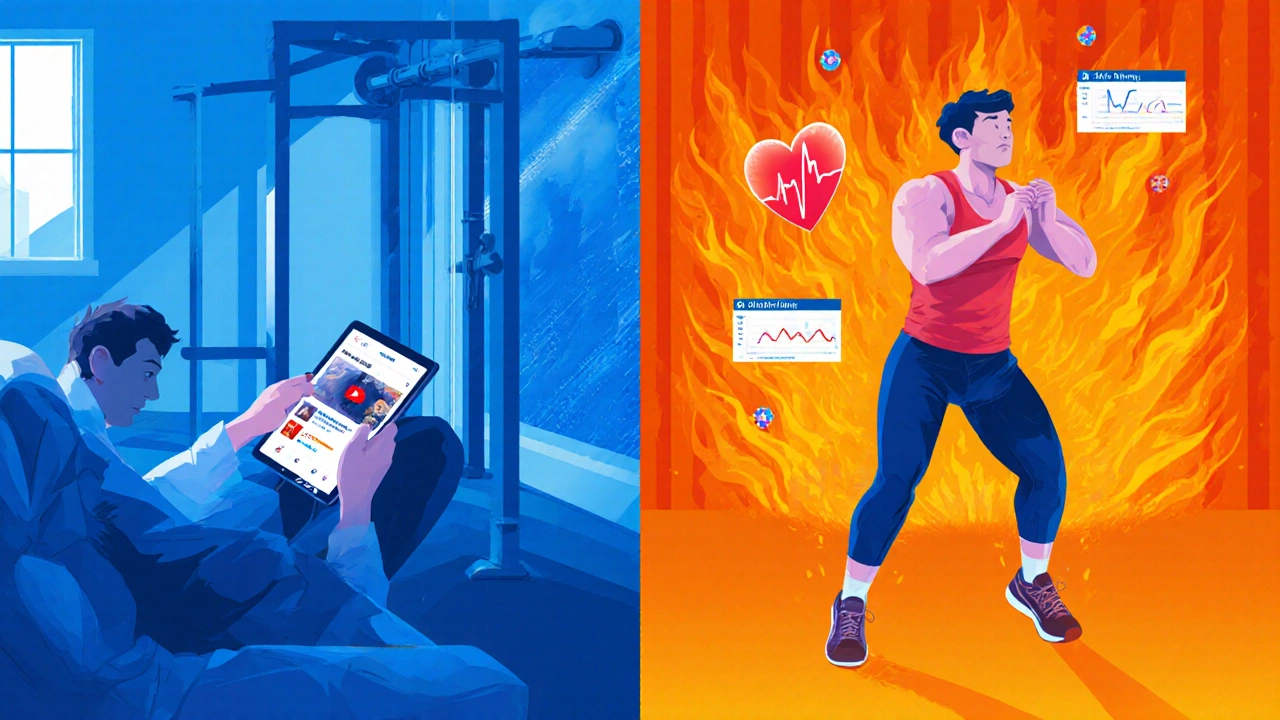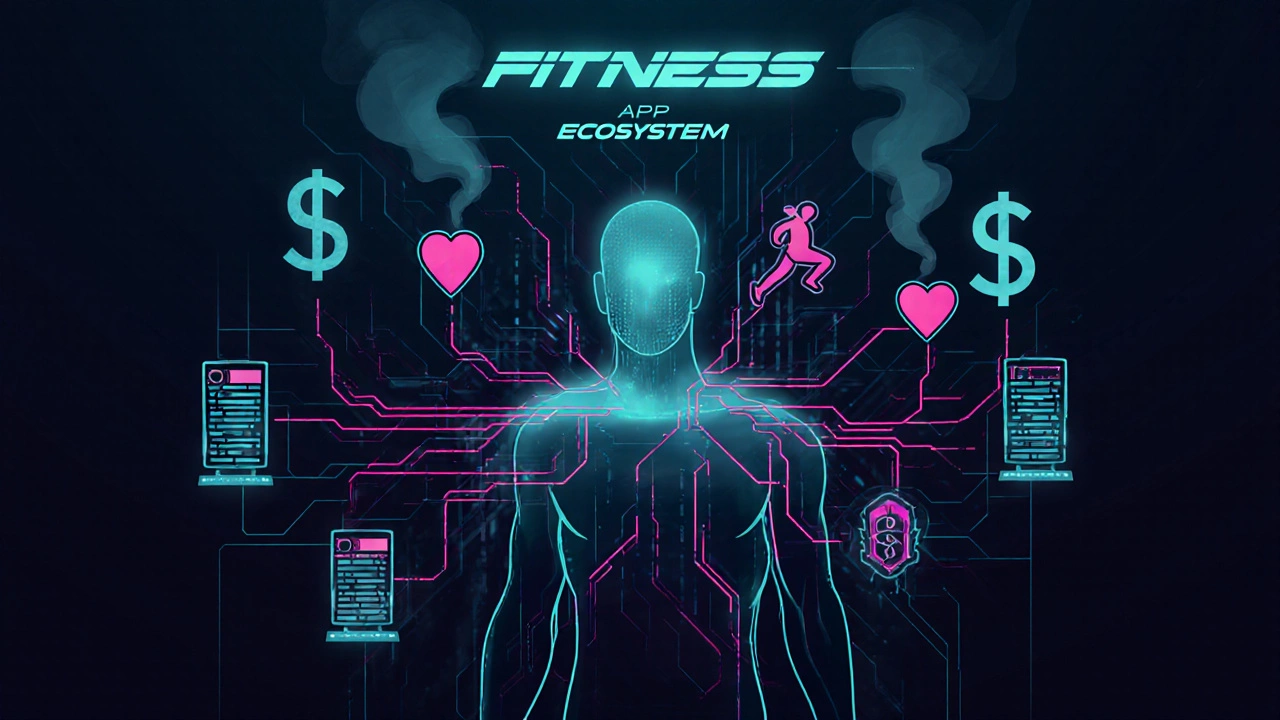
Ever opened your phone to find another fitness app asking for $15 a month? You’re not alone. Millions of people sign up for these apps thinking they’re getting a personal trainer, a dietitian, and a coach all in one - only to cancel after a few weeks because it feels like paying for a luxury service you don’t really use. So why are fitness apps so expensive? It’s not just about the code. It’s about marketing, data, and the illusion of exclusivity.
Look at any top fitness app - Peloton, Apple Fitness+, Nike Training Club Premium, or even newer players like Freeletics or Centr. They don’t sell workouts. They sell identity. The price tag isn’t for the algorithm that tracks your squats. It’s for the feeling that you’re part of a movement. These apps invest heavily in branding: celebrity trainers, glossy production quality, curated playlists, and influencer partnerships. All of that costs money. And that cost gets passed to you.
Think of it like buying a pair of running shoes. You could get a basic pair for $50. Or you could pay $200 for a brand that tells you it’ll make you faster, stronger, and cooler. Fitness apps operate the same way. The underlying tech - motion tracking, heart rate zones, workout scheduling - is often built on open-source tools or off-the-shelf APIs. But the packaging? That’s where the markup lives.
Behind every 10-minute HIIT routine or guided meditation is a team. A choreographer. A certified trainer. A video editor. A sound engineer. A nutritionist who designed the meal plan. A copywriter who wrote the motivational captions. For a single app to offer 200+ workouts, each with multiple variations and progressions, that’s hundreds of hours of professional labor.
Take Peloton. They hire trainers who make six-figure salaries. Some earn over $300,000 a year just to lead live classes. Those trainers don’t work for free. And they don’t train in a garage - they film in studios with lighting rigs, multiple cameras, and live audience feedback systems. That’s not a startup expense. That’s a corporate budget.
Even smaller apps like Centr, backed by Chris Hemsworth, pay top dollar for talent. You’re not just paying for a workout. You’re paying for access to someone who’s been on a Hollywood set, trained elite athletes, and has a social media following in the millions. That kind of access doesn’t come cheap.
Every time you log a workout, track your sleep, or enter your weight, you’re feeding data into a system that learns your habits. That data is gold. Fitness apps use it to predict when you’ll quit, what type of workout you’ll stick with, and how to upsell you to a higher tier.
Some apps sell anonymized data to health researchers or insurance companies. Others use it to fine-tune their algorithms - making their recommendations more accurate, which keeps you subscribed longer. The more you use the app, the more valuable you become to them. And the more they can charge you.
It’s not illegal. It’s not even hidden. Most apps mention data collection in their terms. But few users realize that their 3 a.m. yoga session or skipped meal is being analyzed to optimize their subscription retention. That’s a hidden cost - you’re paying with your behavior.

How do you convince someone to pay $15 a month for something they can get for free on YouTube? You spend millions on ads. Fitness apps spend more on marketing than on development. Look at the numbers: Apple Fitness+ didn’t launch with a big ad campaign - but Peloton spent over $300 million on marketing in 2021 alone. That’s more than their entire revenue from hardware.
That spending doesn’t vanish. It gets baked into your monthly fee. You’re paying for billboards in New York, Instagram influencers in London, and YouTube ads targeting people who just searched for ‘how to lose belly fat.’ The app doesn’t need to be perfect. It just needs to be visible. And visibility costs money.
Once you’ve invested time into an app - you’ve synced your Apple Watch, saved your favorite routines, followed a specific trainer - leaving feels like starting over. That’s intentional. These apps are designed to create dependency.
They use psychological tricks: streak counters, achievement badges, weekly challenges, and limited-time content. If you miss a week, you get an email: ‘We miss you!’ If you cancel, you’re offered a 50% discount for 3 months. It’s not generosity. It’s behavioral engineering.
And then there’s the fear of missing out. ‘This program only runs for 30 days.’ ‘Only 50 spots left for the next challenge.’ ‘Your trainer is leaving next month.’ These aren’t real scarcity tactics. They’re manufactured urgency. And they work. People pay more to avoid the feeling of losing something they’ve already invested in.
Yes, you can get high-quality workouts for free. YouTube channels like HASfit, Blogilates, and FitnessBlender have millions of subscribers. Apps like Nike Training Club and Adidas Training offer solid free tiers. Even Apple Fitness+ gives you a month free with a new device.
But here’s the catch: free apps rarely offer personalization. They don’t adapt to your progress. They don’t adjust your plan if you hurt your knee. They don’t send you a custom meal plan based on your macros. And they don’t have a live coach who checks in.
Free content is great if you’re self-motivated. But if you need structure, accountability, and feedback, you’re more likely to stick with a paid app. That’s why people pay - not because they have to, but because they believe it’ll help them succeed.

Let’s break it down. When you pay $15 a month for a fitness app, you’re not just paying for workouts. You’re paying for:
That’s a lot. And for some people, it’s worth it. If the app gets you moving 3 days a week when you otherwise wouldn’t, then $15 is a bargain. But if you’re just watching the videos and never doing the workouts? Then you’re paying for a digital decoration - not a tool.
Before you hit subscribe, ask yourself:
Most people cancel after 2-3 months because they realize they’re not using it. That’s normal. The industry expects it. But you don’t have to be part of the churn. Try a 7-day trial. Use it like you mean it. If you stick with it, great. If not, you’ve learned something valuable: your motivation doesn’t need a subscription.
Fitness apps aren’t expensive because they’re hard to build. They’re expensive because they’re good at selling a dream. The real question isn’t ‘Why are they so pricey?’ It’s ‘Why am I willing to pay for it?’
If you’re getting results - if you’re moving more, feeling stronger, sleeping better - then you’re getting value. But if you’re just scrolling through workouts you never do, you’re not paying for fitness. You’re paying for the illusion of it.
There’s nothing wrong with spending money on your health. But don’t let marketing make you feel like you’re failing if you don’t subscribe. Real fitness doesn’t live in an app. It lives in your consistency - whether you pay for it or not.
It depends on how you use them. If you’re someone who needs structure, accountability, and guided workouts to stay consistent, then yes - a good app can be worth the cost. But if you’re just watching videos or trying out routines without actually doing them, you’re wasting money. The value isn’t in the app itself - it’s in the action you take because of it.
Apps with celebrity trainers, live classes, and high-end production (like Peloton or Centr) cost more because they pay for talent, studio time, and marketing. Apps like Nike Training Club or Adidas Training offer solid free tiers because they’re backed by big brands that use them to sell gear, not subscriptions. The price reflects the brand’s business model - not necessarily the quality of the workouts.
Absolutely. Free resources like HASfit, Blogilates, and FitnessBlender offer full-body workouts, progressions, and modifications. You won’t get personalized feedback or adaptive plans, but if you’re disciplined, you can build strength, lose weight, and improve mobility without paying a cent. The barrier isn’t access - it’s consistency.
Most apps collect your data - weight, heart rate, sleep, workout history - but how they use it varies. Reputable apps like Apple Fitness+ and Google Fit encrypt your data and don’t sell it. Others may share anonymized data with third parties for research or advertising. Always check the privacy policy. If it’s vague or says ‘may share with partners,’ proceed with caution.
Start with free trials - most apps offer 7 to 30 days. Use them fully. Then look for bundled deals: Apple Fitness+ comes free for a year with a new Apple Watch. Amazon Prime members get access to select fitness apps. Some gyms include app access with membership. And don’t forget: many apps offer discounts for students, military, or annual payments. Paying yearly often cuts the cost in half.
If you’re thinking about trying a new app, start small. Try a free version. Use it for two weeks. If you’re still moving, still motivated, still seeing progress - then consider upgrading. But don’t let the price tag convince you it’s the only way. Real fitness doesn’t require a subscription. It just requires you to show up.